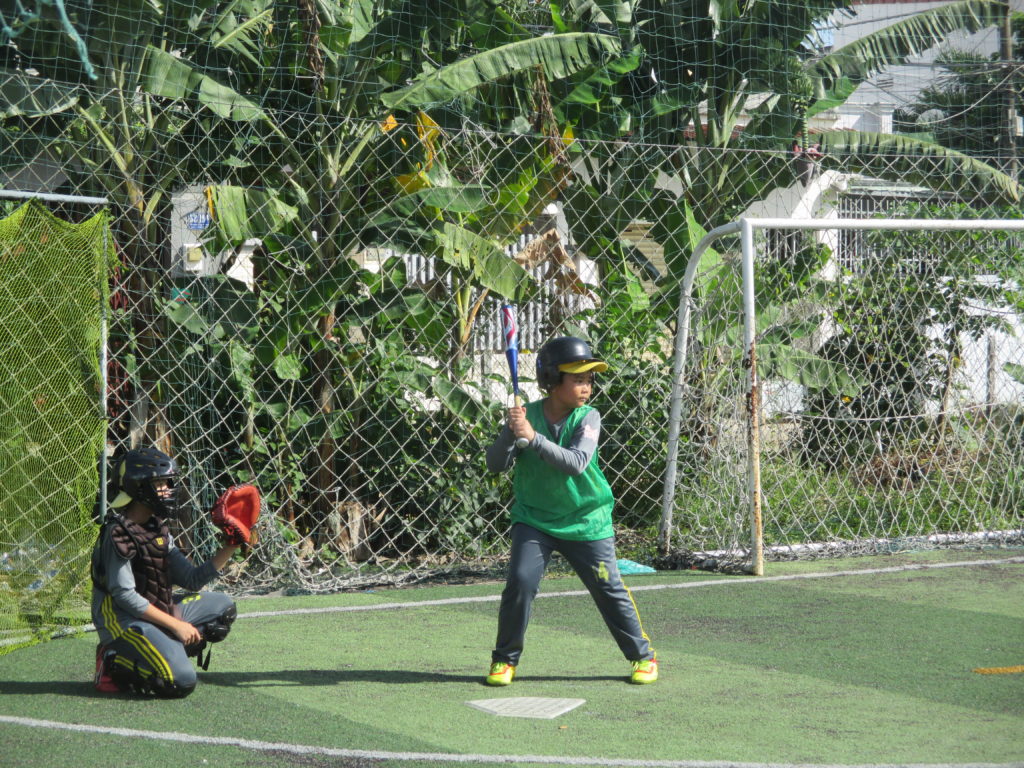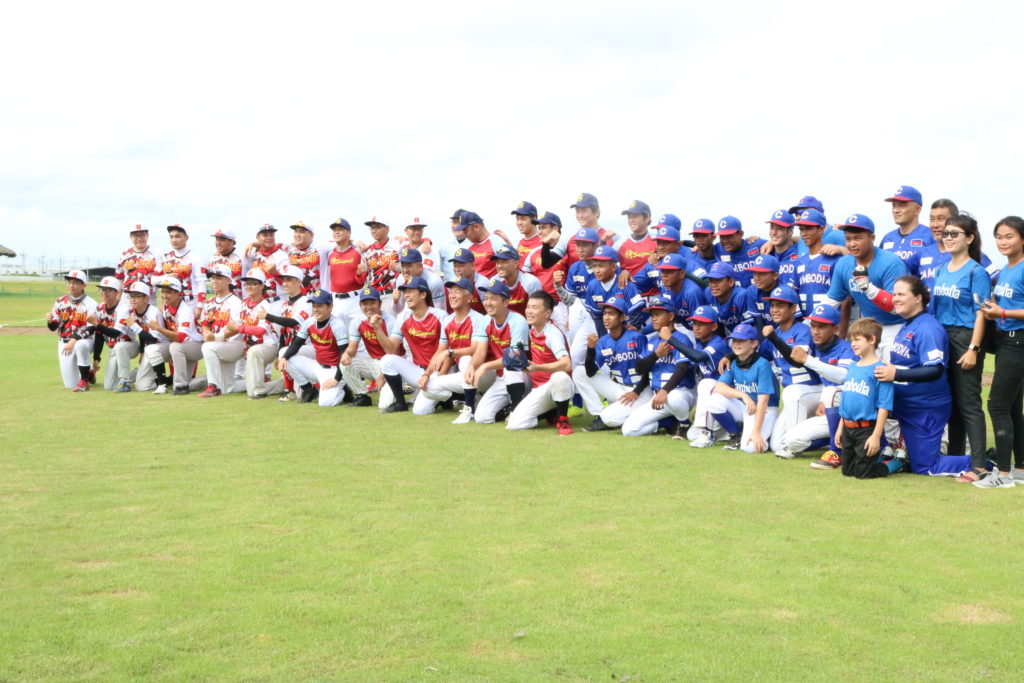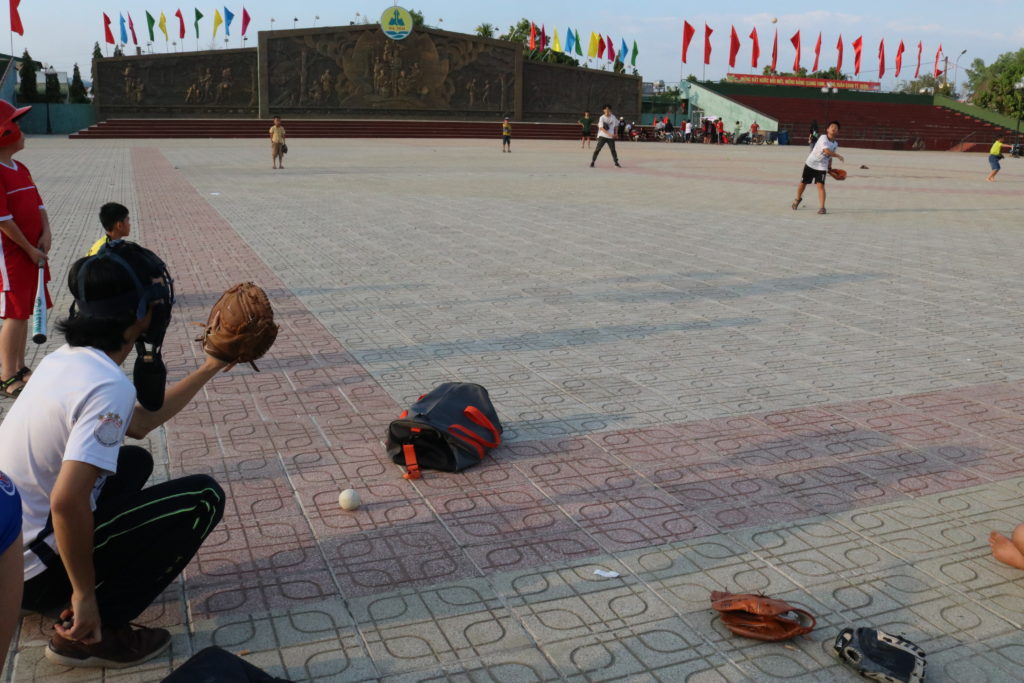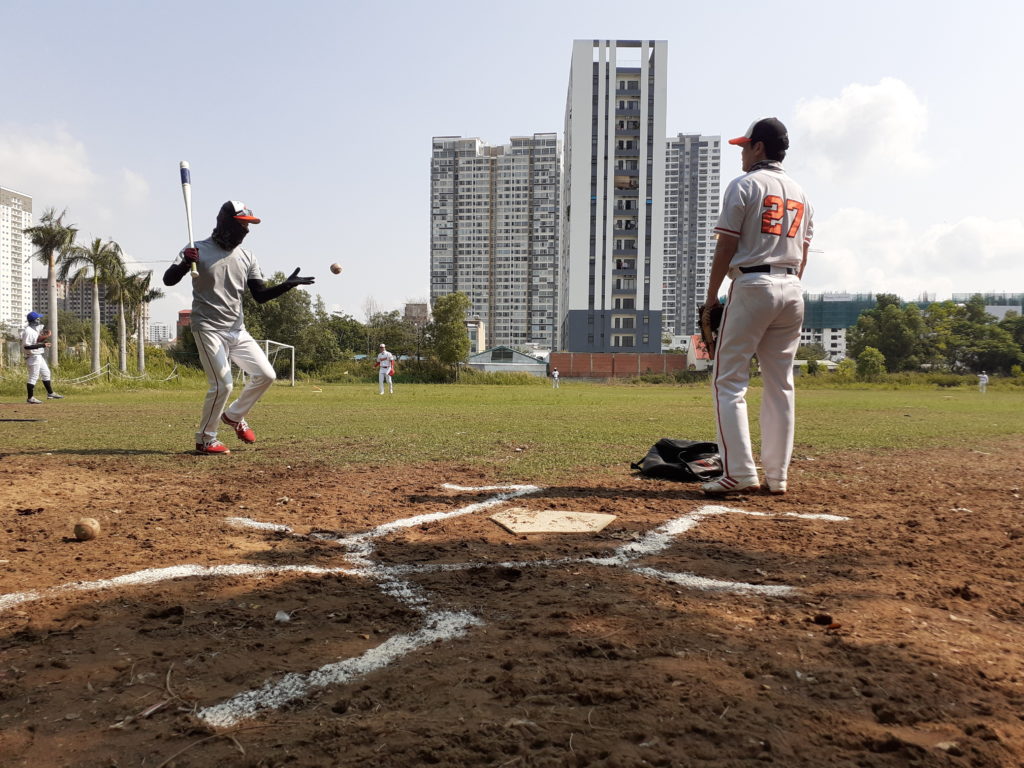
Written with contributions by Joe Whelan of World Baseball Project.
It took a lot of scoreless innings before baseball started gaining traction in Vietnam. Back in 1999, a Japanese businessman tried to create a ball club in Ho Chi Minh City, but when he passed away in 2001, the club dissolved. It wasn’t until 2006 that another team was formed, this time by the faculty of the International Studies department at Hanoi National University (they aptly nicknamed the team FisHANU). Then, in 2011, the remnants of the original Ho Chi Minh club got back together and formed the Ho Chi Minh City Baseball Association (HCMCB). Since then, baseball has continued to grow throughout Vietnam. With the founding of the Vietnam Baseball Softball Federation (VBSF) this past April, the country made their greatest leap forward yet.
The VBSF is a government-backed organization. Their aim is to attract international investments, trainers and competitions to Vietnam, which will hopefully motivate more people to participate in baseball and softball. The organization’s first elected President, Tran Duc Phan – a high-ranking figure outside of his VBSF work – is the current Deputy Director of the Government’s Department of Sports and Physical Training.
In talking to a few Vietnamese ballplayers, it sounds like hopes are high for the VBSF. Chien Manh, the captain and ace for the Hanoi FisHANU team, said, “The VBSF want to build their system and help to make baseball spread in Vietnam. I hope that they’ll create a national tournament or league in the future.”
Author and Researcher, Hoai Anh Le, who served as captain of the Hanoi Ams Phoenix from 2019-2020, echoed much of the same. “We’re close to having our first official championship this summer,” she said– and that’s not the only exciting new development on the horizon.
“In Saigon [Ho Chi Minh City],” Le said, “The HCMCB has deployed some programs to incorporate baseball into students’ general Physical Education requirements at school, like opening training sessions for PE teachers who would later teach baseball to students.”
She continued, “The HCMCB has also organized a baseball training program, designed as therapeutic treatment, for students with autism and intellectual disabilities.”
Foreign supporters have been instrumental as the VBSF and HCMCB roll out programs like these. As was the case with the young Laos Baseball League, Korean and Japanese investments have helped Vietnamese baseball enthusiasts secure funding to build their new field in Hanoi, and travel to tournaments across the Asian continent.

But investments are only one side of the coin. Ballplayers, trainers, and even TV shows from Korea and Japan have been an essential part of this process as well. Travis Hodges, a documentary photographer who attended and photographed a FisHANU game back in 2018, said, “I was interested in how a foreign sport could become popular in Vietnam – especially a sport that is so synonymous with America.”
While American baseball has undeniably influenced the global growth of the sport, Hodges soon discovered that Japanese manga comics were even more instrumental than MLB broadcasts in exposing Vietnamese youth to the game. Indeed, the biggest baseball influencers in Vietnam are from the Asian market.
“The games I photographed were being played against South Korean expats, many of whom worked in technology companies like Samsung,” he continued “Those players had grown up playing baseball, so it was very much a case of experience vs. youth and enthusiasm. The FisHANU team were mostly still at school or university.”
But these types of organized games are still relatively new. If you were to go back even five or ten years, the caliber of ballplayer in Vietnam would look a lot different. In those early days, kids took to sandlots and car parks for practice. They used discarded seat cushions for chest protectors, various objects for bases, and shared a limited supply of communal gloves while shagging pop flies. Very few experienced coaches were involved, and YouTube was their primary resource for training tutorials and pitching tips.

Although many a ballgame is still played on back lots with insufficient equipment, the tides have turned dramatically. Between VBSF, FisHANU, and HCMCB, the sport is enjoying some official support and quickly gaining momentum. The Japan Vietnam Baseball Association (JVBA) has also been a significant contributor to Vietnamese baseball development by providing coaching and training as well as baseball-related travel opportunities to Japan. Between JVBA and the Korean-operated Ho Chi Minh Baseball League (HBL), the foreign interest in Vietnamese baseball development continues to expand as well.
Despite the challenges posed by the COVID-19 pandemic, Vietnamese ballplayers have continued to practice and improve. The next important step for baseball’s growth in Vietnam will come when construction on the new Hanoi field is complete. Then, the VBSF’s focus will probably turn to Ho Chi Minh City, then perhaps Da Nang.

Vietnam will host the 2021 SEA Games, but due to the current lack of viable fields and facilities, baseball and softball have been scratched from the competition. The Vietnamese government also hasn’t yet established a national baseball or softball team, so the country will be unable to compete in the inaugural baseball competition at this summer’s Tokyo Olympics.
Despite this, there’s a chance that a Vietnamese youth squad could medal at the 2022 SEA Games. Perhaps we’ll see a Vietnamese national baseball team competing at the 2024 Olympics. It’s not out of the realm of possibility that a Vietnamese baseball league will be created to rival KBO and NPB in the not-so-distant future. And, if a new league is formed, I think I’ve got a few good team names to suggest. How about the Can Tho Taters? The Buon Me Thuot Moonshots? The Da Nang Dingers? Regardless, if a Vietnamese baseball league is eventually created, you can bet I’ll be in the bleachers with a cold Huda beer and a steaming banh bao in hand come opening day.